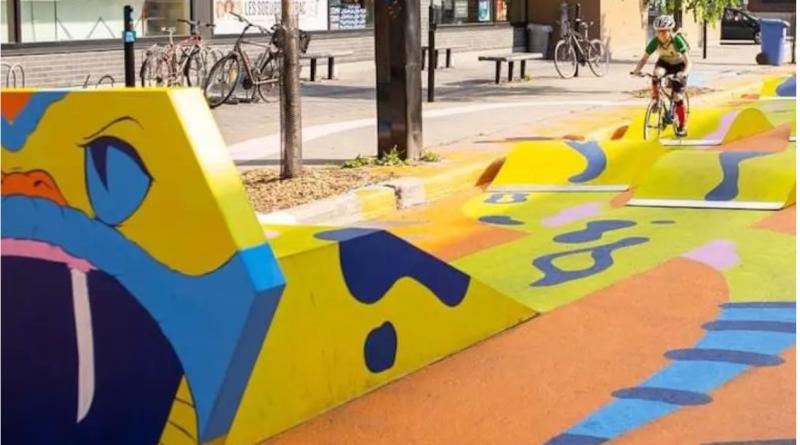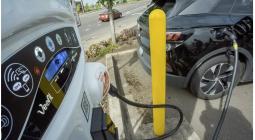Montreal Adds Nine More Car-Free Streets after ‘Mind Blowing’ Success

Four years after Montreal decided to make a 2.5-kilometre stretch of a busy downtown artery car-free every summer, the transformation continues to receive rave reviews from users and local businesses.
Covering more than 30 intersections, the stretch of Mont-Royal Avenue currently given over to pedestrian traffic has been turned into “a daily festival” by Montrealers and out-of-towners, “with thick crowds almost around the clock, shopping, wandering, packing private patios, or sinking into the baby-blue Adirondack chairs laid out for public use,” writes the Globe and Mail.
Anyone needing to put their feet up can also avail of recommissioned church pews, or repurposed chairs from a local ski lift. And everywhere you look there is greenery—from flowers to vegetable gardens—much of it covering former parking spaces.
Art installations and street performances enrich the summer pageant that Mont-Royal now provides, much to the delight of more than 90% of visitors, according to a recent survey by the local business association, the Société de développement de l’Avenue du Mont-Royal.
Roughly two-thirds of local business owners are fans of the summer shift to a slower street, though there are still rumblings about reduced parking and concerns about deliveries.
Claude Rainville, director of Société de développement, told the Globe his association is working to address mobility concerns for seniors and people with disabilities, as buses are being rerouted to accommodate the avenue’s annual transformation.
Banishing cars from Mont-Royal was a long-standing goal of Montreal mayor Valérie Plante and her Projet Montréal party, writes the Globe. “A formerly fringey left-of-centre outfit that got its start in the neighbourhood of tightly packed duplex and triplex apartment buildings,” Projet Montréal won election in 2017 with Plante at the helm and a mandate to make the city more walkable and bikeable. Plante was re-elected in 2021 in the midst of the COVID-19 pandemic.
Mont-Royal remains the flagship effort, but no less than nine other commercial streets in Montreal are being similarly transformed this summer. “The spectacle of one major street without cars, let alone 10, has left certain visitors from the rest of Canada marvelling at Montreal’s ambition,” writes the Globe.
“People would lose their mind if you did that to St. Clair,” said Toronto housing developer and urbanist writer, Angus Knowles.
“To use a technical term, it blew my mind,” said Vancouver’s former chief planner, Brent Toderian, adding that he was particularly impressed by the combination of playful ingenuity and practicality that has gone into the transformation of Mont-Royal.
“They weren’t lazy about it—they didn’t just throw up barriers and ban cars,” he said. He also marvelled at how much was done with comparatively little funds—a little over C$1 million.
“It might be the best bargain I’ve ever heard,” Toderian said.
As Montrealers celebrate what looks like a deepening trend of making people, rather than cars, the raison d’être for city streets, active mobility advocates in the United States are urging “slow streets” to reverse a grim spike in pedestrian and cyclist deaths in 2022, reports Smart Cities Dive.
In a trend that has persisted beyond pandemic-era measures to support physical and mental health, more people are walking and riding on city streets that simply aren’t designed for them, Chris McCahill, managing director of the State Smart Transportation Initiative (SSTI) at the University of Wisconsin, told a webinar in June.
Advance green traffic lights on pedestrian and cyclist travel and “turn-calming programs” that slow down cars at intersections are two strategies that go far in preventing injury, whilst being easy on city budgets, said Rob Viola, director of safety policy and research at the New York City Department of Transportation.




